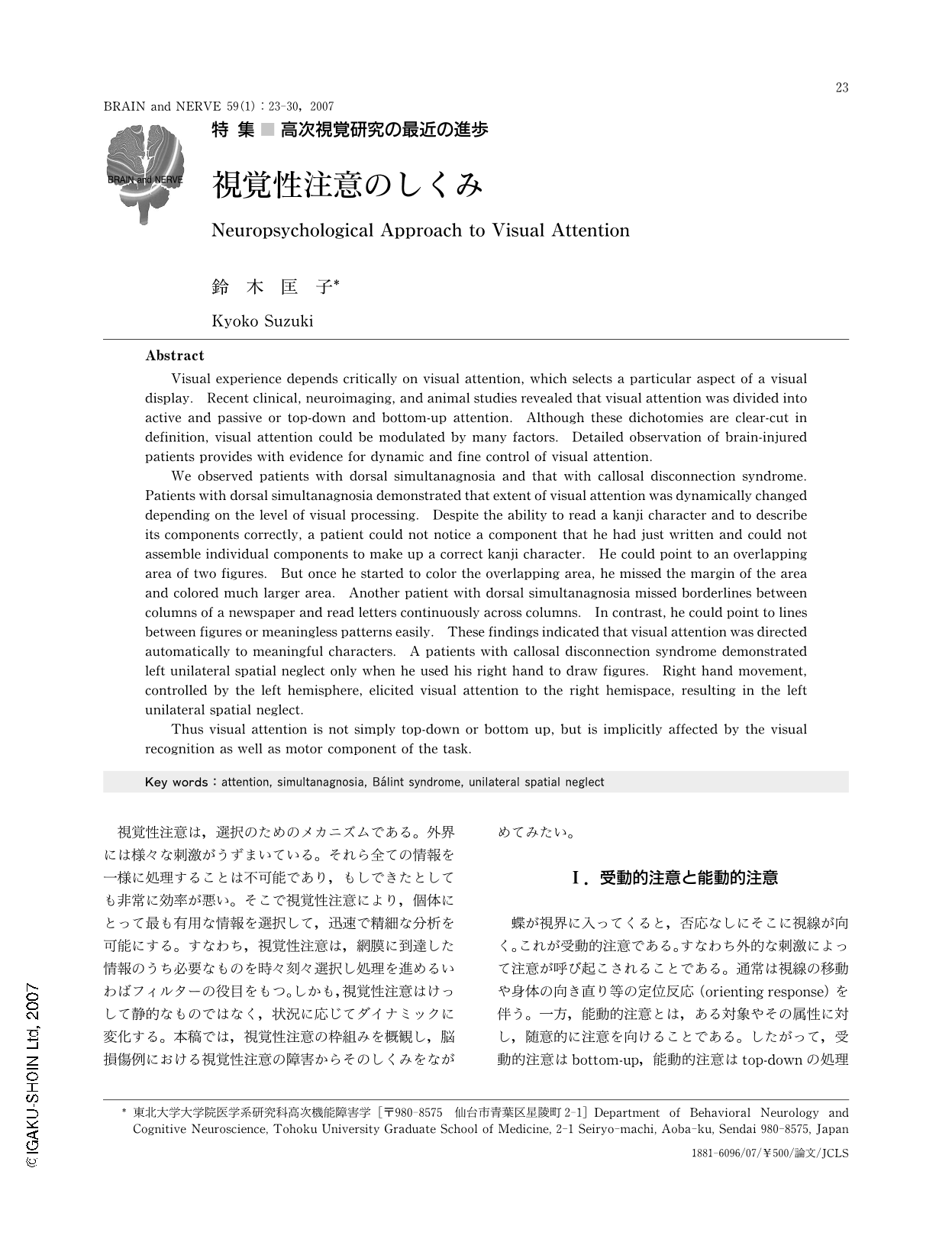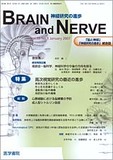Japanese
English
- 有料閲覧
- Abstract 文献概要
- 1ページ目 Look Inside
- 参考文献 Reference
視覚性注意は,選択のためのメカニズムである。外界には様々な刺激がうずまいている。それら全ての情報を一様に処理することは不可能であり,もしできたとしても非常に効率が悪い。そこで視覚性注意により,個体にとって最も有用な情報を選択して,迅速で精細な分析を可能にする。すなわち,視覚性注意は,網膜に到達した情報のうち必要なものを時々刻々選択し処理を進めるいわばフィルターの役目をもつ。しかも,視覚性注意はけっして静的なものではなく,状況に応じてダイナミックに変化する。本稿では,視覚性注意の枠組みを概観し,脳損傷例における視覚性注意の障害からそのしくみをながめてみたい。
Abstract
Visual experience depends critically on visual attention, which selects a particular aspect of a visual display. Recent clinical, neuroimaging, and animal studies revealed that visual attention was divided into active and passive or top-down and bottom-up attention. Although these dichotomies are clear-cut in definition, visual attention could be modulated by many factors. Detailed observation of brain-injured patients provides with evidence for dynamic and fine control of visual attention.
We observed patients with dorsal simultanagnosia and that with callosal disconnection syndrome. Patients with dorsal simultanagnosia demonstrated that extent of visual attention was dynamically changed depending on the level of visual processing. Despite the ability to read a kanji character and to describe its components correctly, a patient could not notice a component that he had just written and could not assemble individual components to make up a correct kanji character. He could point to an overlapping area of two figures. But once he started to color the overlapping area, he missed the margin of the area and colored much larger area. Another patient with dorsal simultanagnosia missed borderlines between columns of a newspaper and read letters continuously across columns. In contrast, he could point to lines between figures or meaningless patterns easily. These findings indicated that visual attention was directed automatically to meaningful characters. A patients with callosal disconnection syndrome demonstrated left unilateral spatial neglect only when he used his right hand to draw figures. Right hand movement, controlled by the left hemisphere, elicited visual attention to the right hemispace, resulting in the left unilateral spatial neglect.
Thus visual attention is not simply top-down or bottom up, but is implicitly affected by the visual recognition as well as motor component of the task.

Copyright © 2007, Igaku-Shoin Ltd. All rights reserved.


